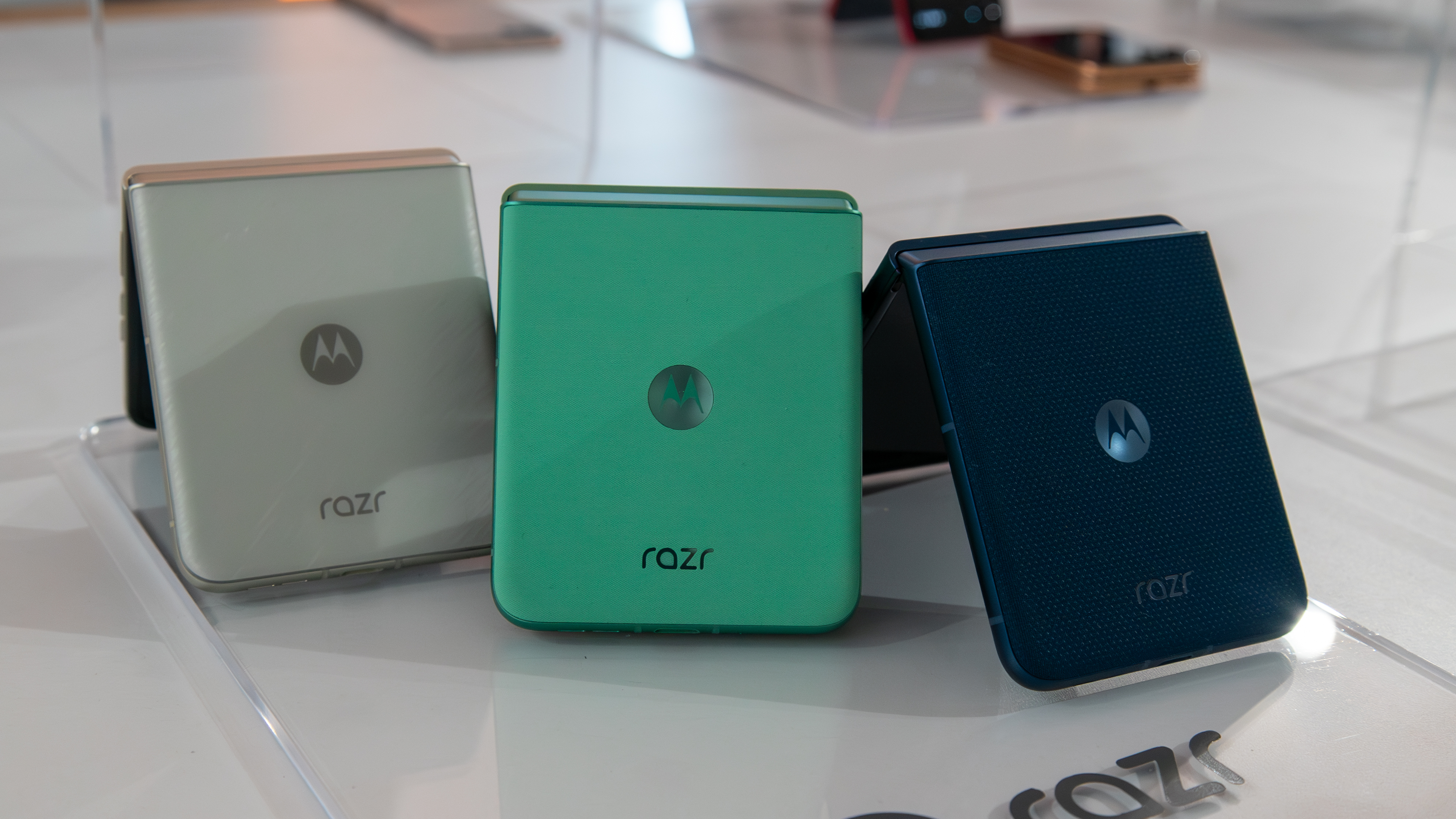Introduction to Automatic Content Recognition
Automatic content recognition (ACR) is a groundbreaking technology that enables devices to identify and recognize media content in real-time, whether it is played on a smart TV, smartphone, or other connected devices. At its core, ACR works by analyzing digital fingerprints or watermarks embedded within audio, video, or other forms of media content. This process allows the system to match the content being consumed against a vast database of known media files, effectively identifying what is being viewed or heard. The technology has gained significant traction in recent years due to its ability to enhance user experiences, streamline advertising efforts, and provide valuable insights into consumer behavior. The growing adoption of automated content recognition across industries underscores its transformative potential. From media companies leveraging ACR data to personalize content recommendations to advertisers using ACR advertising to target specific audiences, this technology has become a cornerstone of modern digital ecosystems. By enabling real-time identification of content, ACR bridges the gap between content creators, distributors, and consumers, creating opportunities for more interactive and engaging experiences. As we delve deeper into the mechanics and applications of ACR, it becomes evident that this technology is not just a tool but a catalyst for innovation in the digital age. How Automated Content Recognition Works At its essence, automated content recognition operates through sophisticated processes involving audio and visual sampling. When a device equipped with ACR technology, such as a smart TV or smartphone app, encounters media content, it captures snippets of the audio or video being played. These snippets are then converted into unique digital fingerprints, which serve as identifiers for the content. These fingerprints are compared against an extensive database of pre-existing media fingerprints to determine a match. If a match is found, the system identifies the content and provides relevant information about it, such as its title, creator, or associated metadata. Watermarking is another critical component of ACR technology. Unlike fingerprinting, which relies on analyzing the inherent characteristics of the content, watermarking involves embedding invisible markers directly into the media file during production. These markers can be detected by ACR systems even if the content undergoes minor alterations, such as cropping or compression. This dual approach—combining fingerprinting and watermarking—ensures that ACR systems can accurately identify content across various formats and platforms, making them highly versatile tools for content recognition. In addition to these core mechanisms, ACR systems often leverage machine learning algorithms to improve their accuracy and efficiency. These algorithms enable the system to adapt to new types of content and refine its matching capabilities over time. For instance, advancements in AI integration have allowed ACR systems to detect subtle variations in content, such as background music or dialogue changes, further enhancing their ability to identify media in real-time. This combination of advanced technologies ensures that automated content recognition remains a robust and reliable solution for identifying media content in diverse environments. Applications of ACR Technology The versatility of automatic content recognition ACR technology extends far beyond simple content identification, offering transformative applications across multiple industries. One of the most prominent use cases is in the realm of personalized content recommendations. Streaming platforms and smart TVs leverage ACR data to analyze viewers' consumption patterns in real-time, enabling them to suggest content tailored to individual preferences. For example, if a viewer frequently watches action movies or listens to a specific genre of music, ACR systems can recommend similar content, enhancing user engagement and satisfaction. This personalization not only improves the user experience but also increases the likelihood of prolonged platform usage and customer retention. In the advertising industry, ACR advertising has emerged as a game-changer. Advertisers use ACR data to gain precise insights into viewership habits, allowing them to deliver targeted ads based on the content being consumed. For instance, if a household is identified as watching a cooking show, ACR-enabled systems can serve advertisements for kitchen appliances or recipe books. This level of granularity ensures that ads are contextually relevant, increasing their effectiveness and reducing wasted impressions. Furthermore, ACR facilitates cross-platform synchronization, enabling advertisers to extend campaigns seamlessly across devices such as smart TVs, smartphones, and wearables. This interconnected approach maximizes reach and engagement, making ACR an indispensable tool f

Automatic content recognition (ACR) is a groundbreaking technology that enables devices to identify and recognize media content in real-time, whether it is played on a smart TV, smartphone, or other connected devices. At its core, ACR works by analyzing digital fingerprints or watermarks embedded within audio, video, or other forms of media content. This process allows the system to match the content being consumed against a vast database of known media files, effectively identifying what is being viewed or heard. The technology has gained significant traction in recent years due to its ability to enhance user experiences, streamline advertising efforts, and provide valuable insights into consumer behavior.
The growing adoption of automated content recognition across industries underscores its transformative potential. From media companies leveraging ACR data to personalize content recommendations to advertisers using ACR advertising to target specific audiences, this technology has become a cornerstone of modern digital ecosystems. By enabling real-time identification of content, ACR bridges the gap between content creators, distributors, and consumers, creating opportunities for more interactive and engaging experiences. As we delve deeper into the mechanics and applications of ACR, it becomes evident that this technology is not just a tool but a catalyst for innovation in the digital age.
How Automated Content Recognition Works
At its essence, automated content recognition operates through sophisticated processes involving audio and visual sampling. When a device equipped with ACR technology, such as a smart TV or smartphone app, encounters media content, it captures snippets of the audio or video being played. These snippets are then converted into unique digital fingerprints, which serve as identifiers for the content. These fingerprints are compared against an extensive database of pre-existing media fingerprints to determine a match. If a match is found, the system identifies the content and provides relevant information about it, such as its title, creator, or associated metadata.
Watermarking is another critical component of ACR technology. Unlike fingerprinting, which relies on analyzing the inherent characteristics of the content, watermarking involves embedding invisible markers directly into the media file during production. These markers can be detected by ACR systems even if the content undergoes minor alterations, such as cropping or compression. This dual approach—combining fingerprinting and watermarking—ensures that ACR systems can accurately identify content across various formats and platforms, making them highly versatile tools for content recognition.
In addition to these core mechanisms, ACR systems often leverage machine learning algorithms to improve their accuracy and efficiency. These algorithms enable the system to adapt to new types of content and refine its matching capabilities over time. For instance, advancements in AI integration have allowed ACR systems to detect subtle variations in content, such as background music or dialogue changes, further enhancing their ability to identify media in real-time. This combination of advanced technologies ensures that automated content recognition remains a robust and reliable solution for identifying media content in diverse environments.
Applications of ACR Technology
The versatility of automatic content recognition ACR technology extends far beyond simple content identification, offering transformative applications across multiple industries. One of the most prominent use cases is in the realm of personalized content recommendations. Streaming platforms and smart TVs leverage ACR data to analyze viewers' consumption patterns in real-time, enabling them to suggest content tailored to individual preferences. For example, if a viewer frequently watches action movies or listens to a specific genre of music, ACR systems can recommend similar content, enhancing user engagement and satisfaction. This personalization not only improves the user experience but also increases the likelihood of prolonged platform usage and customer retention.
In the advertising industry, ACR advertising has emerged as a game-changer. Advertisers use ACR data to gain precise insights into viewership habits, allowing them to deliver targeted ads based on the content being consumed. For instance, if a household is identified as watching a cooking show, ACR-enabled systems can serve advertisements for kitchen appliances or recipe books. This level of granularity ensures that ads are contextually relevant, increasing their effectiveness and reducing wasted impressions. Furthermore, ACR facilitates cross-platform synchronization, enabling advertisers to extend campaigns seamlessly across devices such as smart TVs, smartphones, and wearables. This interconnected approach maximizes reach and engagement, making ACR an indispensable tool for modern marketing strategies.
Beyond entertainment and advertising, ACR technology is also revolutionizing audience analytics and content performance tracking. Media companies and broadcasters rely on ACR data to measure how audiences interact with their content, from viewing durations to peak engagement times. This data-driven approach allows content creators to make informed decisions about programming schedules, ad placements, and future content development. Additionally, ACR systems help identify unauthorized distribution of copyrighted material, providing a mechanism for rights holders to protect their intellectual property and monetize their work effectively. These applications underscore the multifaceted role of ACR technology in shaping the future of media consumption, advertising, and content management.
The Role of ACR Data in Shaping Industries
ACR data plays a pivotal role in transforming industries by providing actionable insights derived from real-time content recognition. One of the most significant impacts of ACR data is its ability to enhance audience targeting and segmentation. By analyzing the content being consumed on smart TVs and other devices, businesses can create detailed profiles of users based on their preferences, habits, and demographics. This granular understanding of audience behavior allows marketers to craft highly personalized campaigns, ensuring that advertisements resonate with viewers on a deeper level. For example, ACR data can reveal whether a household prefers sports, documentaries, or children's programming, enabling advertisers to tailor their messaging accordingly. This precision not only boosts conversion rates but also optimizes ad spend by eliminating irrelevant impressions.
Moreover, ACR data serves as a powerful tool for measuring campaign effectiveness. Traditional metrics such as click-through rates and impressions often fail to capture the full picture of ad performance. In contrast, ACR provides comprehensive analytics by tracking how audiences engage with specific ads in relation to the content they are consuming. For instance, advertisers can determine whether viewers mute their televisions during commercials or switch channels entirely, offering valuable feedback for refining ad strategies. Additionally, ACR data supports attribution modeling, helping advertisers understand how their campaigns contribute to sales or brand awareness across different touchpoints. This data-driven approach empowers brands to allocate resources more efficiently and achieve measurable outcomes.
Beyond advertising, ACR data is instrumental in driving innovation in content creation and distribution. Media companies use ACR insights to identify trending topics, popular genres, and emerging audience preferences, guiding decisions about future programming and investments. Similarly, streaming platforms analyze ACR data to optimize content libraries, ensuring they cater to evolving consumer demands. By bridging the gap between creators and audiences, ACR data fosters a more dynamic and responsive media ecosystem, benefiting all stakeholders involved.
Challenges and Limitations of ACR Technology
Despite its numerous advantages, automatic content recognition (ACR) technology is not without its challenges and limitations. One of the primary concerns revolves around privacy issues. ACR systems often collect detailed data about users’ viewing habits, which can include sensitive information such as the types of shows they watch or the specific times they engage with content. This level of data collection raises questions about how securely this information is stored and whether users are fully aware of the extent of the monitoring. Without transparent consent mechanisms and robust data protection measures, there is a risk of eroding consumer trust, which could hinder the widespread adoption of ACR technology.
Technical limitations also pose significant hurdles for ACR systems. For instance, the accuracy of content recognition can be compromised by factors such as poor audio quality, background noise, or heavily edited video content. While advancements in AI and machine learning have improved the reliability of ACR, these systems are not infallible and may occasionally misidentify content or fail to detect it altogether. Additionally, the reliance on watermarking and fingerprinting databases means that ACR systems may struggle to recognize newer or less mainstream content that has not yet been indexed. This limitation can be particularly problematic for niche markets or independent creators whose work may not be included in the reference databases.
Another challenge lies in the ethical implications of ACR deployment. The ability to track and analyze viewing habits at scale creates opportunities for misuse, such as intrusive behavioral profiling or discriminatory targeting practices. Furthermore, the integration of ACR into smart TVs and other connected devices has sparked debates about whether consumers truly understand the extent to which their activities are being monitored. Addressing these concerns requires a balanced approach that prioritizes user privacy, enhances technical accuracy, and establishes clear ethical guidelines for the responsible use of ACR technology.
The Future of ACR Technology: Opportunities and Growth
As ACR technology continues to evolve, its future holds immense promise, driven by advancements in artificial intelligence and machine learning. These innovations are expected to enhance the precision and speed of content recognition, enabling ACR systems to process increasingly complex datasets with greater efficiency. For instance, AI-powered algorithms could soon predict emerging trends in media consumption by analyzing real-time ACR data, allowing content creators and advertisers to stay ahead of shifting audience preferences. Additionally, the integration of natural language processing (NLP) could expand ACR’s capabilities to recognize spoken dialogue, subtitles, and even emotional cues within content, opening up new possibilities for hyper-personalized recommendations and immersive user experiences.
The market for ACR technology is projected to grow exponentially, with forecasts indicating a global valuation of USD 8.4376 billion by 2032, reflecting a compound annual growth rate (CAGR) of 26.74%. This growth is fueled by the rising adoption of smart TVs, second-screen devices, and IoT-enabled gadgets, all of which rely on ACR to deliver seamless and interactive experiences. Moreover, emerging applications such as augmented reality (AR) and virtual reality (VR) are likely to incorporate ACR systems, creating opportunities for immersive advertising and dynamic content interaction. As industries continue to explore the potential of ACR, its role in shaping the future of media, advertising, and consumer engagement will undoubtedly expand, solidifying its position as a cornerstone of digital innovation.






































































































































































![[The AI Show Episode 146]: Rise of “AI-First” Companies, AI Job Disruption, GPT-4o Update Gets Rolled Back, How Big Consulting Firms Use AI, and Meta AI App](https://www.marketingaiinstitute.com/hubfs/ep%20146%20cover.png)

















































































































































































.jpg?width=1920&height=1920&fit=bounds&quality=70&format=jpg&auto=webp#)






















































































_Alexey_Kotelnikov_Alamy.jpg?width=1280&auto=webp&quality=80&disable=upscale#)
_Brian_Jackson_Alamy.jpg?width=1280&auto=webp&quality=80&disable=upscale#)



 Stolen 884,000 Credit Card Details on 13 Million Clicks from Users Worldwide.webp?#)


























































































![Roku clarifies how ‘Pause Ads’ work amid issues with some HDR content [U]](https://i0.wp.com/9to5google.com/wp-content/uploads/sites/4/2025/05/roku-pause-ad-1.jpg?resize=1200%2C628&quality=82&strip=all&ssl=1)

![Look at this Chrome Dino figure and its adorable tiny boombox [Gallery]](https://i0.wp.com/9to5google.com/wp-content/uploads/sites/4/2025/05/chrome-dino-youtube-boombox-1.jpg?resize=1200%2C628&quality=82&strip=all&ssl=1)













![Apple Seeds visionOS 2.5 RC to Developers [Download]](https://www.iclarified.com/images/news/97240/97240/97240-640.jpg)
![Apple Seeds tvOS 18.5 RC to Developers [Download]](https://www.iclarified.com/images/news/97243/97243/97243-640.jpg)





































































































